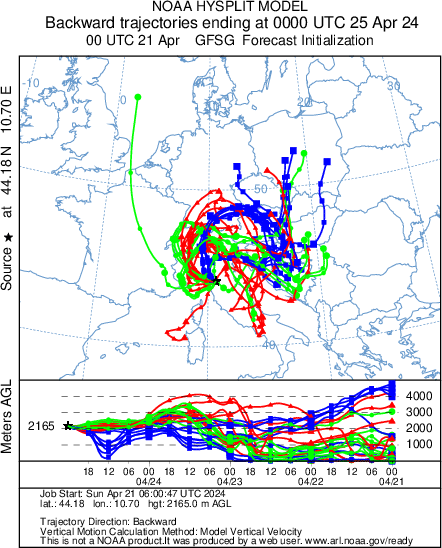Black carbon
Starting date: 1-7-2005
Status: Running
Instrumentation and calibration: Black carbon was measured from July 2005 till February 2007 by using a Particle Soot Absorption Photometer (PSAP). Starting from April 2007, black carbon is measured by a Multi Angle Absorption Photometer (MAAP, Model 5012 – Thermo Electron Corporation). Both PSAP and MAAP participated in the first NA4 Aethalometer-Nephelometer Intercomparison (Leipzig, Germany - March 2007) in the framework of EUSAAR project. MAAP participated also in the 2nd NA4 Absorption Photometer Workshop (Leipzig, Germany - July 2009). Detection limit was measured as 3σ of 12 h measurement with an absolute filter. Calibration of sampling flow and internal temperature-pressure sensors are conducted every 6months
Project affiliation (s) Present: SHARE, EUSAAR,GAW-WMO
Related research programmes
- Tropospheric background condition
- Long-range transport
- Aerosol properties
Why is this research important? Black carbon (BC) is a primary aerosol resulting from incomplete combustion processes. His main sources are fossil fuel (anthropogenic) and biomass burning (natural and anthropogenic). However the major sources of atmospheric BC are related to anthropogenic activities. Due to its chemical inertia, BC is ubiquitous in the atmosphere, present at low levels in remote areas, and higher concentrations (1-30 μg m−3) near the sources, in urban area and near biomass burning regions. BC strongly absorbs solar radiation and it has been recognised as a driving factor of global warming: the magnitude of the direct radiative forcing due to BC can exceed that due to methane. Therefore continuous measurements of black carbon concentration in background conditions are important to determine source regions, elucidate the mechanisms of long range transport and validate both regional and global models. High-elevation monitoring sites provide important information on the not well-known free troposphere composition, in order to characterize its typical background conditions and investigate the influence of human activity on its composition.
Quick look BC monthly median value is characterized by a seasonal cycle, with the highest concentration during summer (0.33 ± 0.27 μg m−3) and the lowest during winter (0.08 ± 0.09 μg m−3). A few episodes of elevated BC concentration are also recorded during winter due to the transport of polluted air masses on a regional and long-range scale.
Organization (s): ISAC-CNR Via Gobetti 101, I-40129, Bologna www.isac.cnr.it
Contact persons: Dr. Angela Marinoni e-mail: a.marnoni [at] isac.cnr.it phone: +39 051 6399597
Dr. Paolo Bonasoni e-mail: p.bonasoni [at] isac.cnr.it, phone: +39 051 6399590
Where can I find the data? EBAS - World Data Centre for Aerosol (WDCA) or by direct request to:a.marinoni [at] isac.cnr.it



